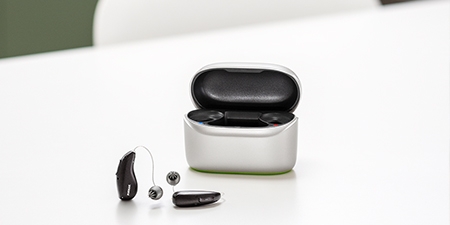The Valsalva Maneuver for Ear Health: Technique, Risks and Benefits

The Valsalva Maneuver for Ear Health: Technique, Risks and Benefits
10 min
Published August 29, 2025
August 6, 2025
Have you ever had the feeling of your ears blocking over inflight when the plane is taking off or descending to land? Or have you felt this when traveling up or down in an elevator? This is a type of ear barotrauma, which happens when there is stress on your eardrum¹. It occurs when the air pressure in your middle ear behind your eardrum and the air pressure in the environment are out of balance.
The Valsalva maneuver is a simple technique that can help alleviate ear congestion, equalize pressure, and provide relief from discomfort. This maneuver involves a controlled process of attempting to forcibly exhale while closing the mouth and pinching the nose shut.
This helps in opening the Eustachian tubes and promoting better ear health. However, it is crucial to understand the proper technique and associated risks to ensure safe and effective results.
How the Valsalva Maneuver Works
The Valsalva maneuver primarily targets the Eustachian tubes, which connect the middle ear to the back of the throat. These tubes play a vital role in regulating air pressure and draining fluids from the middle ear.
When the Eustachian tubes become blocked or fail to function correctly, you may experience symptoms such as:
- Ear pain
- Muffled hearing
- Difficulty equalizing pressure during altitude changes, like when flying.
The Valsalva maneuver works by increasing the pressure in the nasopharynx. The nasopharynx is the top part of your throat, behind your nose, just above the roof of your mouth².
Increasing the pressure in your nasopharynx in turn pushes air into the Eustachian tubes. This equalizes the pressure on both sides of the eardrum, providing relief and restoring normal function.
How Do You Unblock the Eustachian Tube with the Valsalva Maneuver?
To safely perform the Valsalva maneuver, follow these steps:
- Sit or stand upright and take a deep breath.
- Close your mouth and pinch your nostrils closed using your fingers.
- Gently and slowly exhale while keeping your mouth and nose closed.
- You should feel pressure in your ears or a popping sensation as air enters the Eustachian tubes.
- Release the pressure and inhale slowly to complete the maneuver.
How Do You Decongest Your Ears?
Apart from the Valsalva maneuver, several other techniques can help decongest ears and drain fluid from the Eustachian tube:
- Yawning or swallowing: These actions help open the Eustachian tubes and regulate pressure.
- Chewing gum or sucking on hard candy: Similar to yawning or swallowing, these actions encourage the Eustachian tubes to open.
- Nasal decongestants: Over-the-counter nasal decongestant sprays or oral medications may temporarily relieve congestion, facilitating fluid drainage.
- Nasal steroids: Best of the congestion is due to allergies.
- Grommets or ventilation tubes: In severe cases, having a ventilation tube inserted into the eardrum will help to drain fluid and relieve pressure³.
Does the Valsalva Maneuver Lower Blood Pressure and Heart Rate?
During the Valsalva maneuver, there is a transient increase in blood pressure and heart rate.
This is a normal physiological response as a result of increased intrathoracic pressure (pressure in your chest) while straining.
However, the duration of these changes is typically short-lived, with the blood pressure and heart rate returning to their normal levels. Thus, the Valsalva does not pose significant risks to healthy individuals⁴.
Is the Valsalva Maneuver Safe or Dangerous?
While the Valsalva maneuver is generally safe, certain individuals should exercise caution or avoid performing it altogether. These include:
- Individuals with a history of ear trauma or recent ear surgery.
- People with a known or suspected perforated eardrum.
- Those experiencing severe ear pain or acute ear infection.
- Individuals with a medical condition that affects blood pressure, such as hypertension or cardiovascular disease.
Risks and Potential Complications of the Valsalva
Although the Valsalva maneuver is generally considered safe, there are some risks associated with its improper execution or use in certain medical conditions. These risks include:
- Ear damage: Forceful or excessive application of pressure during the maneuver can potentially cause damage to the delicate structures of the ear.
- Ruptured eardrum: Individuals with a pre-existing perforated eardrum are at increased risk of further damage or rupture.
- Pain or discomfort: If the maneuver is performed incorrectly or forcefully, it can lead to ear pain or discomfort.
Summary
The Valsalva maneuver is a useful technique for relieving ear congestion and equalizing pressure in the Eustachian tubes. When performed correctly and in appropriate circumstances, it can help alleviate symptoms and promote ear health.
However, it is essential to exercise caution, follow the proper technique, and avoid the maneuver in specific medical conditions to minimize potential risks.
References
¹ MedlinePlus. (2021). Ear barotrauma. Retrieved fromhttps://medlineplus.gov/ency/article/001064.htm on 6 June 2023.
² American Academy of Otolaryngology - Head and Neck Surgery. (2017). Valsalva Maneuver. Retrieved from: https://www.enthealth.org/conditions/valsalva-maneuver/ on 6 June 2023.
³ Orvidas, L. (2022). Plugged Ears: What is the Remedy. Retrieved from https://www.mayoclinic.org/diseases-conditions/common-cold/expert-answers/plugged-ears/faq-20058092 on 12 June 2023.
⁴ Valsalva Maneuver. (2022). Retrieved from https://my.clevelandclinic.org/health/treatments/23209-valsalva-maneuver on 12 June 2023.




